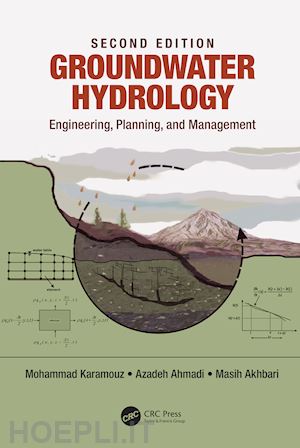Mohammad Karamouz is a professor at the University of Tehran. He is an internationally known water resources engineer and consultant. He is licensed as a PE in the state of New York since 1985. Dr. Karamouz is the former dean of engineering at Pratt Institute in Brooklyn, New York. He is also a fellow of the American Society of Civil Engineers (ASCE) and a diplomat of the American Academy of Water Resources Engineers. Dr. Karamouz received his BS in civil engineering from Shiraz University, his MS in water resources and environmental engineering from George Washington University, and his PhD in hydraulic and systems engineering from Purdue University. He served as a member of the task committee on urban water cycle in UNESCO-IHP VI and was a member of the planning committee for the development of a 5-year plan (2008–2013) for UNESCO’s International Hydrology Program (IHP VII). Among many professional positions and achievements, he also serves on a number of task committees for the ASCE. In his academic career spanning 35 years, he has held positions as a tenured professor at Pratt Institute (Schools of Engineering and Architecture in Brooklyn) and at Polytechnic University (Tehran, Iran). He was a visiting professor in the Department of Hydrology and Water Resources at the University of Arizona, Tucson, 2000–2003 and a research professor at NYU, 2009–2014. He was also the founder and former president of Arch Construction and Consulting Co. Inc. in New York City. His teaching and research interests include integrated water resources planning and management, flood resilient cities, groundwater hydrology and pollution, drought analysis and management, water quality modeling and water pollution, decision support systems, climate forecasting, and the conjunctive use of surface and groundwater. He has more than 350 research and scientific publications, books, and book chapters to his credit, including three books: Urban Water Engineering and Management and Hydrology & Hydroclimatology published by CRC Press in 2010, and 2012, respectively, Water Resources System Analysis published by Lewis Publishers in 2003, and a coauthored book entitled Urban Water Cycle Processes and Interactions published by Taylor & Francis Group in 2007. Professor Karamouz serves internationally as a consultant to both private and governmental agencies, such as UNESCO and the World Bank. Dr. Karamouz is the recipient of the 2013 ASCE Service to the Profession and 2018 ASCE Hydraulic Engineering Awards. Azadeh Ahmadi is an associate professor in the Department of Civil Engineering at Isfahan University of Technology (IUT). She received her BS in civil engineering and her MS in water resources engineering from IUT, and her PhD in water resources management from the University of Tehran. She was a research associate in the Department of Civil and Environmental Engineering at the University of Bristol through a UK fellowship in 2008 and at the Eawag Institute of ETH University in 2017. Dr. Ahmadi is an international expert and consultant in the application of systems engineering in the planning of aquifer-river-reservoir systems. Her teaching and research interests include groundwater modeling, water engineering and management, systems analysis, the conjunctive use of surface and groundwater, conflict resolution, climate change impacts studies, analysis of risk and uncertainty, and development of decision support systems. Masih Akhbari is the founder of Global Water Resources Inc., where he develops interdisciplinary models and provides consultant services for water resources management and offers expert witness services on cases with disputes over the management of water resources systems. He is also a project engineer at Larry Walker Associates, where he supports development of groundwater sustainability plans under California’s Sustainable Groundwater Management Act. Prior to these positions, he served as a senior water resources engineer at Riverside Technology Inc., a cutting-edge company that provides innovative IT-based solutions to develop decision support systems for water resources. Dr. Akhbari obtained his PhD from Colorado State University (CSU), followed by two years of postdoctoral research at the University of California, Davis to investigate the effects of climate change on streamflow, stream temperature, and cold-water habitats for the California Energy Commission, and at CSU to assess the United States perspective on the water-energy-food nexus for the Department of State and U.S. Army Corps of Engineers. His journey to apply increasingly complex tools of analysis to thorny problems around the world has already led to the development of interdisciplinary decision-support tools to increase the security of water, energy, and food systems. He has employed hydrologic, engineering, systems analysis, and social science concepts to develop frameworks and tools that support informed decision-making for improved management of











